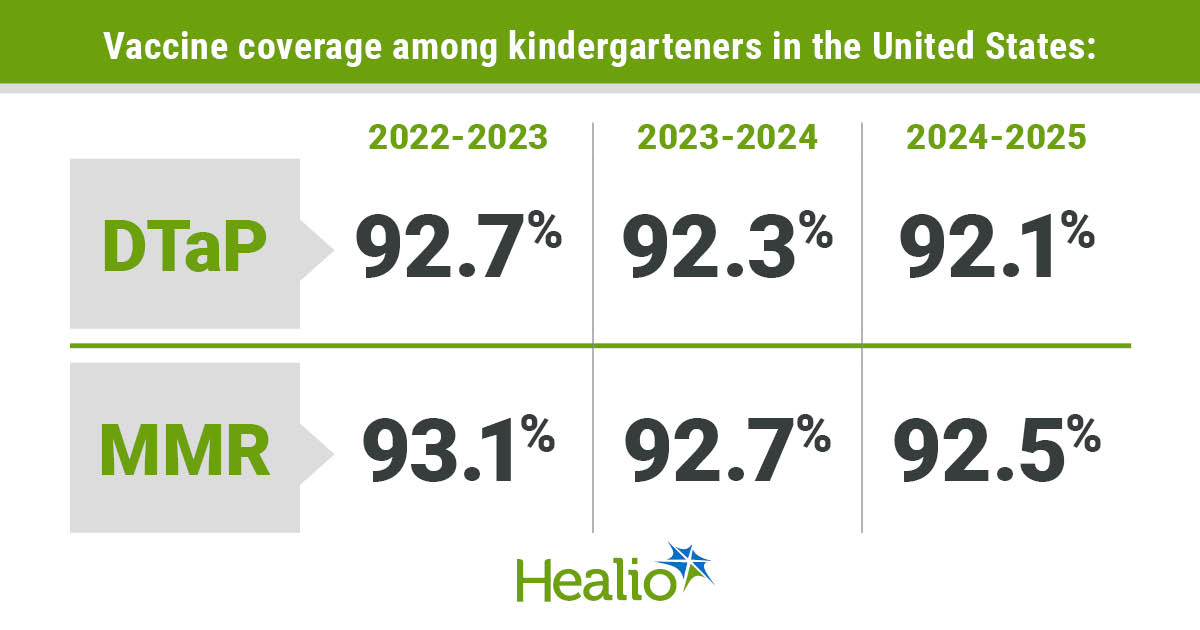August 01, 2025
5 min read
Key takeaways:
- Data from Spherix Global Insights show increasing comfort with obinutuzumab in lupus nephritis treatment.
- Expected FDA approval of obinutuzumab may change the treatment landscape.
Although obinutuzumab has not yet received FDA approval in lupus nephritis, findings from a recent survey conducted by Spherix Global Insights indicated increasing use and comfort with this medication.
The data set comes on the heels of American College of Rheumatology recommendations in lupus nephritis, in which triple therapy — including glucocorticoids, mycophenolate mofetil (MMF) or cyclophosphamide, and either belimumab (Benlysta, GlaxoSmithKline) or a calcineurin inhibitor (CNI) — is conditionally recommended for patients who are newly diagnosed, experiencing a flare, or have active Class III, IV or V disease.

And while most clinicians who responded to the Spherix survey said they would increase use of belimumab and voclosporin for lupus nephritis in light of the guidelines, many indicated that they would also consider obinutuzumab (Gazyva, Genentech).

J. Michelle Kahlenberg
“This finding is expected,” J. Michelle Kahlenberg, MD, PhD, professor of internal medicine and dermatology, Giles Boles and Dorothy Mulkey research professor of rheumatology, and vice chair of research in the department of internal medicine at the University of Michigan, told Healio. “The data for Gazyva were not published when the ACR guidelines were drafted and so the drug was not able to be included in the recommended treatment algorithm.”
That said, the ACR document allows for the use of anti-CD20 agents such as rituximab (Rituxan, Genentech) and obinutuzumab in refractory patients. However, it fails to stipulate how these agents could be used in a non-refractory setting.
Despite this concern, one-third of nephrologists and more than one-quarter of rheumatologists expect increased use of obinutuzumab in the coming years, particularly if the drug receives an expected FDA approval sometime in late 2025 or early 2026, according to the Spherix findings.

Sawyer May
“While the updated ACR guidelines do prefer triple therapy regimens consisting of belimumab or a CNI, anti-CD20 agents like obinutuzumab can be considered in patients with nonresponsive or refractory lupus nephritis,” Sawyer May, insights director of rheumatology at Spherix Global Insights, said in an interview. “The fact that some physicians are already signaling interest in using obinutuzumab highlights the ongoing demand for more potent options, particularly for high-risk or treatment-resistant cases.”
As rheumatologists and nephrologists await further action by the FDA, a closer look at the treatment landscape, and the opinions of colleagues expressed in the Spherix study, could shed light on lupus nephritis care moving forward.
‘Outcomes will no doubt improve’
For Richard A. Furie, MD, chief of rheumatology at Northwell Health, the addition of another agent can only be positive.
“Outcomes will no doubt improve with the addition of obinutuzumab to the drugs already available,” he told Healio. “It wasn’t that long ago that treatments for lupus nephritis were quite limited. Since 2020, belimumab and voclosporin received approval, and I do believe obinutuzumab will receive regulatory approval.”
However, among the excitement for newly approved treatments, and the anticipation for yet another, Allen P. Anandarajah, MBBS, MS, of the University of Rochester Medical Center, noted that B-cell depleting therapies have a rocky history in lupus nephritis.
“B-cell depletion is known to be effective in the treatment of lupus and lupus nephritis despite the negative results with rituximab for lupus,” he told Healio. “Obinutuzumab has been shown to result in more effective B-cell depletion than rituximab, and therefore may prove to be more effective in the management of lupus nephritis.
“More importantly, it provides another much needed option to treat lupus nephritis, a devastating manifestation of lupus,” Anandarajah added.
Comfort zone
Further data from the Spherix survey, which polled 74 nephrologists and 75 rheumatologists, showed that rheumatologists were more comfortable than nephrologists with obinutuzumab.
According to the Spherix data, 48% of rheumatologists plan to adopt obinutuzumab within 3 months of FDA approval, compared with 35% of nephrologists.
“Rheumatologists frequently have to use our understanding of disease to make the best use of medications, and if we see good effect with a drug like obinutuzumab, we will try to adapt it into our treatment protocols for patients that we think will benefit,” Kahlenberg said. “Because we have been using B-cell depleting agents like rituximab in patients with refractory systemic lupus erythematosus for a long time, it isn’t a big leap of faith for rheumatologists to consider obinutuzumab.”
According to May, there may be a practical reason for increased uptake among rheumatologists, as well.
“Rheumatologists are more set up to administer IV infusions in their office and generally have more comfortability with biologics,” he said. “Rheumatologists also adopted Benlysta for lupus nephritis faster than nephrologists did.”
Meanwhile, a phase 3 trial of obinutuzumab is ongoing and may shed light on future treatment decisions, according to May.
“Like belimumab, obinutuzumab is expected to positively impact systemic disease, not just renal disease,” he said. “Thus, nephrologists do sometimes defer to rheumatology for those prescribing decisions. This differs from voclosporin where the drug is used solely for renal disease. We saw very similar uptake of voclosporin with rheumatologists and nephrologists.”
According to Spherix, most specialists — including 76% of rheumatologists and 69% of nephrologists — reported they will begin prescribing obinutuzumab within 6 months of approval. It is worth considering whether it will replace other therapies altogether.
Not ‘a total game changer’
Although the results of the critical trials with obinutuzumab are exciting, Anandarajah cautioned that it is premature to speculate on where the drug will fit into treatment regimens for lupus nephritis.
“More widespread use potentially following FDA approval will help provide real world data on efficacy and side effects,” he said. “Ideally, head-to-head trials in the future will help provide information as to where this new medication will be of most benefit to our patients.”
Furie, who was lead author of the phase 3 REGENCY trial, which found that added obinutuzumab to standard therapy for active lupus nephritis led to significantly higher rates of complete renal response, expressed similar reservations.
“Obinutuzumab will definitely cut into use of belimumab and voclosporin, but I do not see it replacing either drug,” he said. “Belimumab’s safety can’t be beat, whereas voclosporin’s capacity to rapidly reduce proteinuria is appealing for those nephrotic patients. Cyclophosphamide will still have a place in the treatment of patients with very angry kidney biopsies, including patients with crescentic glomerulonephritis.”
Data may provide insight on where obinutuzumab will eventually land in the treatment landscape, according to Kahlenberg.
“Given the data from the phase 3 study, obinutuzumab works completely for about 50% of patients,” she said. “While it is good, it is not a total game-changer. I envision it will be recommended among the choices for lupus nephritis. Each patient is different, and we have different reasons for choosing different regimens for them. It is great to have more options that will work.”
The experts at Spherix, meanwhile, said obinutuzumab’s uptake will likely depend largely on how its efficacy and safety data emerge in the months and years following approval.
“We expect the currently approved agents to be preferred by the majority of specialists in early lines,” May said. “The long-term outlook for obinutuzumab will hinge on Roche/Genentech’s ability to demonstrate sustained efficacy and a strong safety profile over time.”
According to Furie, improving lupus care moving forward will ultimately take knowing which drug to use for which patient, based on their individual disease characteristics.
“On the research agenda’s wish list is to develop a biomarker that informs the clinician which drug for which patient,” he said. “Then there is the possibility of mixing drugs, such as early use of one drug followed by a switch to another drug.”
References:
RealTime Dynamix: Lupus Nephritis Q1 2025. Spherix Global Insights. Published January 2025. Accessed June 2025.
Specialists Eye Gazyva as a New Option for Lupus Nephritis, but ACR Guidelines Favor Benlysta and Lupkynis for Upfront Use, According to Spherix Global Insights: https://www.spherixglobalinsights.com/specialists-eye-gazyva-as-a-new-option-for-lupus-nephritis-but-acr-guidelines-favor-benlysta-and-lupkynis-for-upfront-use-according-to-spherix-global-insights/
For more information:
Allen P. Anandarajah, MBBS, MS, can be reached at allen_Anandarajah@URMC.Rochester.edu.
Richard A. Furie, MD, can be reached at rfurie@optonline.net.
Sawyer May can be reached at sawyer.may@spherixglobalinsights.com.
Healio Rheumatology can be reached at rheumatology@healio.com.










